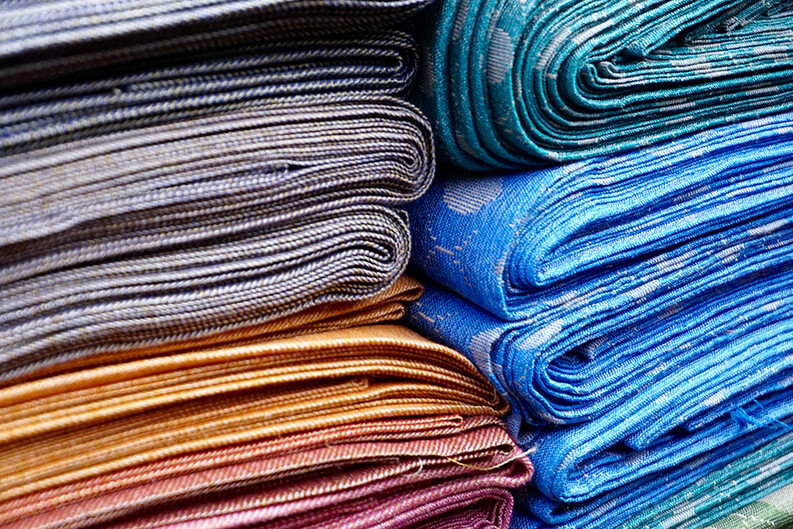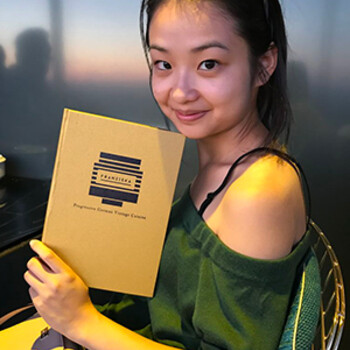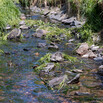Q&A: Momoko Ishii on the Science of Designing Animal-Free Fabrics

Momoko Ishii PhD ’25 is a Law, Ethics & Animals Program (LEAP) student fellow who is a chemist by training and is pursuing a Ph.D. in Environmental Engineering, focusing on bio-synthetic materials and CO2 utilization. Ishii is also a LEAP student grant recipient who has spent the past year investigating ways to develop plant-based alternatives to animal textiles using agricultural waste. LEAP Program Fellow Noah Macey spoke with Ishii about her LEAP Student Grant research; their conversation has been edited for clarity.
Could you give a description of your project? How did you get started with alternative textiles, and what are the problems you’re trying to solve?

I started my Ph.D. program in 2020, in the first year of the pandemic — which was not ideal for people doing lab work like myself. There were strict quarantines and supply shortages for lab equipment. But the upshot of the hassle was that it gave me some time to learn some of the ongoing R&D being done in the private sector — the luxury sector, in particular. I follow trends in high-end fashion and vehicles, and I started to wonder whether I could bridge the gap between next-generation materials used in luxury cars and fashion and my work in environmental engineering. When it comes to high-end cars and clothes, certain materials are animal derived, such as leather used to make car seats, designer bags, and coats. Is there a way to make similarly high-end products in a sustainable way?
When you evaluate sustainability, you have to include the environmental impacts of use and disposal along with production and supply chains. And if you consider all those factors, clothing is such a waste of energy and water. Textiles waste huge amounts of these resources, and beyond that, especially in luxury goods, they use a lot of animal derived materials.
It was the first year of the pandemic, and I was reading white papers, journals, and portfolio summaries written by fashion designers, which are genres of literature often unexplored by scientists. They discuss how material properties achieve and create aesthetics. When you read scientific journal articles on materials, materials are characterized in terms of thermomechanics, water resistance, degradability, durability, etc., but scientists usually don’t design novel materials with aesthetics in mind. That is why you come across papers on biodegradable polymers made from agricultural waste but lacking aesthetic versatility. To be more precise, they may achieve the function as a biodegradable plastic, but did not appear attractive to my taste. I am not embarrassed to admit that as a pretty vain person, I care about appearances, and was eager to explore the bridge between aesthetics and material performance.
On the science side, the main animal derived materials on the market right now are leather, silk, wool, and exotic fur, and we have replacements for all of them. Synthetic leather is made of a polymer called polyurethane; synthetic silk is made from polyester; and acrylic is the current version of synthetic wool. The downside of these materials is that they’re all still petroleum-derived. They partially solve the animal-use problem, but they’re not solving upstream and downstream problems: you’re making these materials from nonrenewable sources like fossil fuels, and the chemistry of these polymers are not easily degradable. After the use phase, they end up sitting in landfills.
In traditional fashion, a material should perform aesthetically for a long time — it should last. But culturally now, people don’t always wear things for the long term. There’s more fast fashion. The economic model isn’t circular either, so if you have a piece of old clothing, you have to use advanced techniques to depolymerize the polymer and use it again. Something that’s hot in green chemistry is making materials that last just as long as they need to, and functionalize it so that you can trigger degradation. A good example is hospital gowns: those are single use textiles for a great reason. But even those are not designed to degrade easily. Why are we making them from materials that last long?
So, my motivation for applying for a LEAP grant was that I want to figure out a non-fossil derived way to make synthetic animal textiles. I’ve been looking into the chemistry of CO2 and thinking of ways to make textiles from combining CO2 with agricultural waste.
What kind of experiments have you been running to find candidate materials?
My dissertation is focused on polycarbonate — it’s a type of plastic that’s harder than textiles, but it’s used for some clothing items like sunglasses. There are folks out there who actually made polycarbonate out of captured CO2 and turned it into sunglasses. Anyway, a focus of my research so far has been figuring out how to catalyze atmospheric CO2 and make it into polymers. One of the challenges is that CO2 is very inert; it’s unreactive and difficult to turn into another chemical without using a lot of energy. And you want to avoid heavy energy use as a green engineer. I use a method called catalysis—you create effective catalysts that lower the energetic requirements for a reaction and provide an alternate route for the CO2 to become something else. That’s an area of fundamental science I’ve been investigating.
I do a lot of experiments in optimizing reaction conditions. There’s a lot of known chemistry that you can use to transform CO2 and agricultural waste, but if the reaction conditions aren’t optimized, you can’t really upscale production of the materials. So, optimizing reactions to transform CO2 into platform materials is a big aspect of my work. The next phase will be turning the platform materials into 3D hierarchical structures that actually look like a textile.
I started with the perspectives of fashion designers — their perspective is important because they know what they’re looking for, and whatever we come up with has to fit their requirements. For fashion, it makes sense to do a top-down approach to material design. People buy leather and lambskin because it feels soft; they’re reacting to the touch of the material, and it’s a subjective experience. I try to imagine how we might translate subjective experience into engineering variables. Do we need something to feel soft? Alright, let’s figure out what sort of tensile strength that implies. Do we need something to last a long time? That’s going to determine the kinds of bonds the material will contain.
How did you come to be interested in animal-free materials in particular?
I’ve always loved pets, so animal cruelty is something I’m very interested in and passionate about. Lots of people in my type of work are interested in climate change, but I think what motivates me the most is preserving rich biodiversity and the ethics of how we use and perceive animals. If you look at the whole history of science, it’s been very anthropocentric. We haven’t thought about our impacts on animals. Even in green chemistry, we have tons of information about substance toxicities in humans, but very little on toxicity to animals. I want to change the trajectory and have a bit of an animal approach and see how science could alleviate the suffering of animals.
The alternative textile field might undergo similar challenges as alternative meat fields right now. There are technologies nowadays where you can culture meat, so you take cells from an animal and, without killing the animal, you can grow the cells in a medium, and do some sort of 3D structuring to turn it into actual meat. But there’s a problem: people don’t necessarily want that type of thing because it’s seen as unnatural. We might have an alternative textile for an animal-derived substance, but people could say, “this isn’t luxurious enough.” But there are other opportunities — there are cool color-changing chemicals that you can derive from plants. Why not incorporate that type of multifunctional element into a next-generation material, so we’re not just stuck with this old, obsolete idea of luxury as created by real animal materials?


